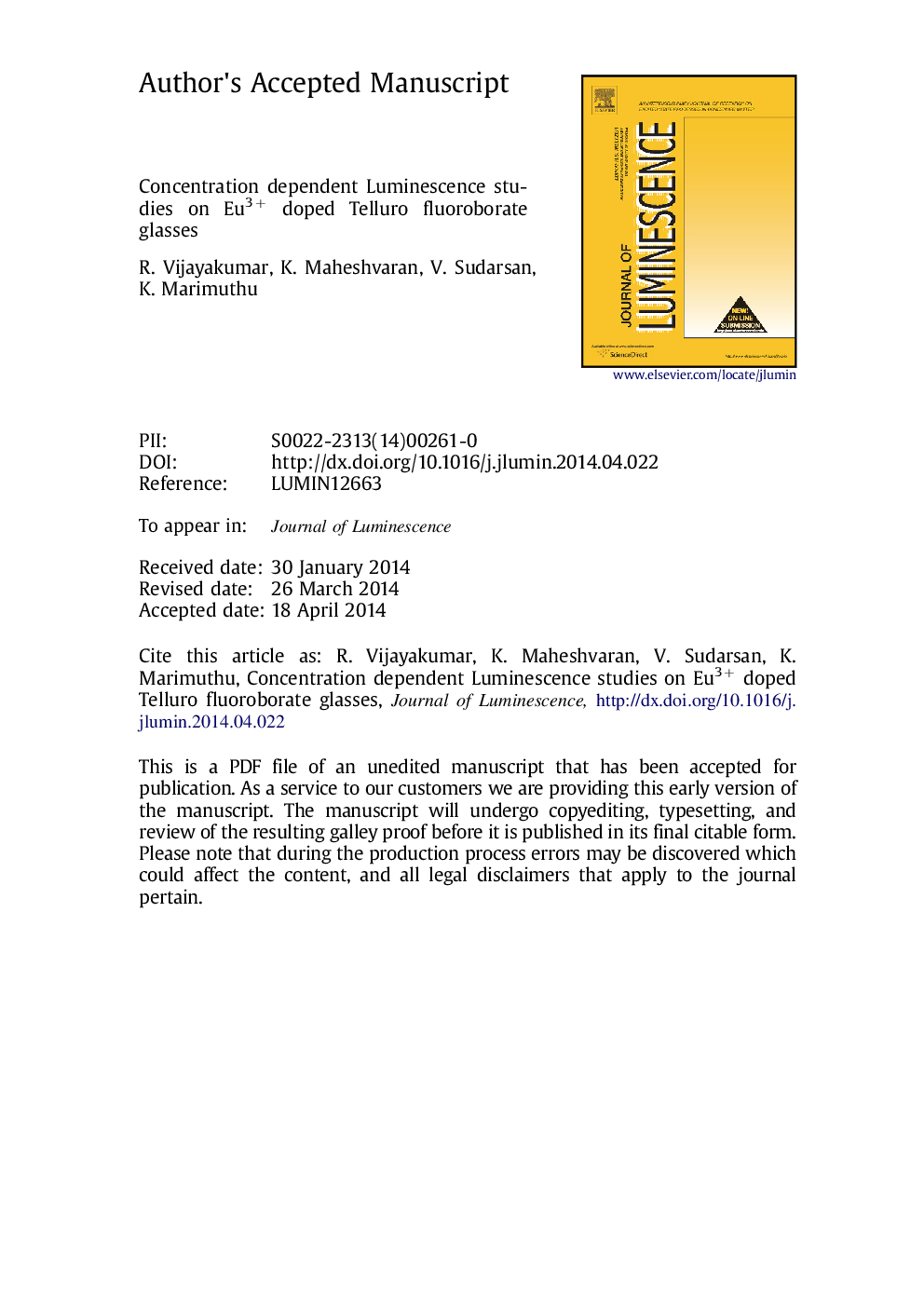| Article ID | Journal | Published Year | Pages | File Type |
|---|---|---|---|---|
| 5399758 | Journal of Luminescence | 2014 | 30 Pages |
Abstract
Eu3+ doped telluro fluoroborate glasses with the chemical composition (40-x)B2O3+15TeO2+15Li2CO3+15LiF+15NaF+xEu2O3 (where x=0.05, 0.1, 0.25, 0.5, 1 and 2 in wt%) have been prepared following the melt quenching technique. Optical properties of the prepared glasses were studied through the absorption, excitation, luminescence and decay spectral measurements. Nephelauxetic׳s ratios (βR) and bonding parameters (δ) were calculated from the absorption spectra to examine the nature of the bonding between the Eu3+ ion and its surrounding ligands. The optical band gap and Urbach׳s energy of the title glasses were determined from the absorption spectra to study the electronic band structure and it is observed that, the band gap values vary inversely with the Urbach׳s energy values. The Judd-Ofelt intensity parameters (Ω2, Ω4 and Ω6) determined from the emission spectra provides valuable information about the Eu-O bonding nature and the structure of the local environment around the Eu3+ ion site. The luminescence intensity ratio (R) of the 5D0â7F2/5D0â7F1 transition has been calculated from the emission spectra to determine the degree of asymmetry around the Eu3+ ion site and to identify the strength of the covalence of Eu3+ ion with its surrounding ligands. The chromaticity coordinates have been calculated from the emission spectra and analyzed with Commission International de I׳Eclairage (CIE) 1931 diagram. The JO intensity parameters have been used to determine the radiative properties such as radiative transition probability (AR), stimulated emission cross-section ÏpE and branching ratios (βR) to estimate the lasing power of the emission transitions and optical gain band width due to their practical importance in laser applications.
Related Topics
Physical Sciences and Engineering
Chemistry
Physical and Theoretical Chemistry
Authors
R. Vijayakumar, K. Maheshvaran, V. Sudarsan, K. Marimuthu,
